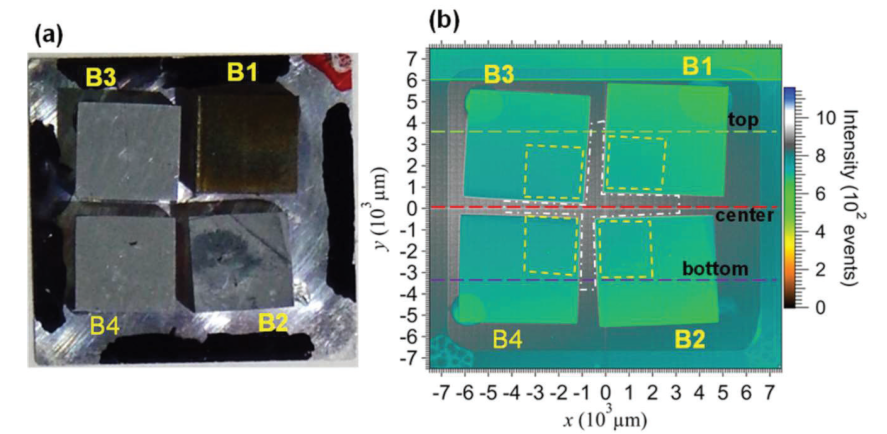Narrow-area Bragg-edge transmission of iron samples using superconducting neutron sensor
Published:

Abstract
This study investigates a current-biased kinetic inductance detector (CB-KID) performance by investigating Bragg-edge spectra from the restricted-area neuron transmission of materials. Iron samples with a size of 5 × 5 × 2 mm3 were used as typical test materials. The ergodic theorem was used to obtain a visible transmission spectrum so that a long-time averaging of a transmission spectrum can alternatively be evaluated using a space average of independently selected area spectra with the same ensemble size. The most visible edges were observed with a limited area sample of 0.43 mm2 using a minimum time bin of 25 μs in a time-of-flight (ToF) spectrum or a wavelength resolution of 0.0007 nm of each neutron pulse at beamline BL10 of the Japan Proton Accelerator Research Complex (J-PARC) center. The main Bragg edge of iron as a sum of random 100 ensembles (with an ensemble size of 3.1 × 2.3 μm2) thus obtained has a distinctive signal-to-noise ratio and can be fitted well with the Rietveld Imaging of Transmission Spectra (RITS) program with Miller indices. We consider that our CB-KID system is, in principle, able to analyze the Bragg edge of samples as small as 3.1 × 2.3 μm2.
T. D. Vu, H. Shishido, K. Aizawa, T. Oku, K. Oikawa, M. Harada, K. M. Kojima, S. Miyajima, K. Soyama, T. Koyama, M. Hidaka, S. Y. Suzuki, M. M. Tanaka, A. Malins, M. Machida & T. Ishida
Journal of Physics: Conference Series 2323, 012028 (2022)
DOI: 10.1088/1742-6596/2323/1/012028
PDF: download
